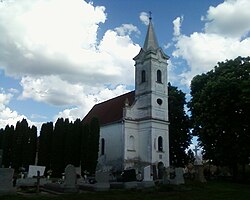Lapáncsa
Lapáncsa
Village in Baranya, Hungary
Lapáncsa (German: Lappantsch) is a village in Baranya county, Hungary.
You can help expand this article with text translated from the corresponding article in Hungarian. (January 2011) Click [show] for important translation instructions.
|
